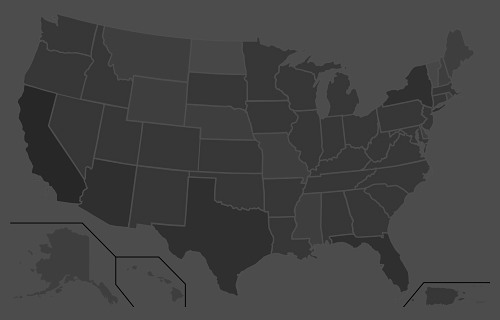“Our added winter moisture and active calling period led to a very long nesting and hatching season, starting in late April and extending into early summer, with chicks hatching as late as early July,” O’Dell said. “From a population standpoint, we are out of a deficit for the first time since 2001-2002. Quail are starting to pop up in places they haven’t been seen in a while.
“If you’ve never had the chance to experience what Arizona quail hunting built its name on, then this would be the year to get out and enjoy it.”
Meanwhile, hunters should note that the season for Mearns’ quail doesn’t begin until Dec. 4. It’s summer rainfall that plays a key role in nesting success and population numbers of this species. After a spotty and relatively weak monsoon across southern Arizona, these birds are likely to be abundant only in pockets that received sufficient precipitation this summer.
A valid Arizona hunting or combination hunt and fish license is required for all hunters 10 and older. Those hunters under 10 must either have a valid hunting or combination hunt and fish license, or be accompanied by an adult who possesses a valid hunting or combination hunt and fish license. Licenses can be purchased online or at license dealers statewide. A youth combination hunt and fish license (ages 10 to 17) is $5.
The general bag limit is 15 quail per day in the aggregate, of which no more than eight may be Mearns’ quail (when the Mearns’ season opens Dec. 4). The general possession limit is 45 quail in the aggregate after opening day, of which no more than 15 Gambel’s, scaled or California quail in the aggregate may be taken in any one day. After the opening of the Mearns’ season, the 45-quail possession limit may include 24 Mearns’ quail, of which no more than eight may be taken in any one day.
More quail-hunting information can be found on the department’s website at https://www.azgfd.com/Hunting/. Another resource for both new and experienced hunters alike is “An Introduction to Hunting Arizona’s Small Game.” Written by Randall D. Babb, the 196-page, full-color book covers where and how to hunt small game birds (like quail), squirrels, rabbits, ducks and geese. It also includes how to prepare and cook your harvest, with illustrations and recipes. The book can be ordered for $16.95 at www.azgfd.gov/publications.
Finally, hunters should check out O’Dell’s techniques for field-dressing quail at https://www.youtube.com/watch?v=3gRwZAcWzzk.
####
Publishers Notes: OUT OF STATE HUNTERS, FISHERMEN & OUTDOOR ENTHUSIASTS; Due to the Covid 19 pandemic, there could be limitations for OUT of STATE hunters, fishermen and other outdoor enthusiasts to include a 14-day quarantine requirement or negative COVID-19 testing alternative. Please check with the State's Department of Natural Resources BEFORE you travel or apply for the 2020 Fall Hunts.
Disclaimer: The views expressed on this site are that of the authors and not necessarily that of TBC Press
Texas White Bass Run Expectations High for 2022
Submitted by: TBC Press
Posted on: 03/01/22
The Backcountry Press
The country's premier daily HUNTING, FISHING & OUTDOOR news in the USA and around the globe. Read whats happening in your neck of the woods & beyond.
© 2020 TBC Press - All Rights Reserved Website Design by:
News # 14730
Here are a few locations to get started:
Colorado River: Above Lake Buchanan, bank anglers can fish for white bass without a fishing license at Colorado Bend State Park. The park offers a boat ramp and bank access.
San Gabriel River: Upstream of Granger Lake, anglers can find white bass fishing at a public access point called Dickerson’s Bottom, a.k.a. “The Steps” in the Granger Wildlife Management Area. This location can be found three-quarters of a mile east of SH 95 on County Road 347 in Williamson County.
Neches River: Above Lake Palestine, anglers can find public access at Chandler River Park. This RACA site – also supported by the East Texas Woods and Waters Foundation – offers nearly 6,000 feet of river frontage for bank fishing and includes a boat ramp and kayak launch.
Llano River: Access to the river is provided through the Kingsland Slab RV Camp with 750 feet of river frontage along the Llano River. This River Access and Conservation Area (RACA) site offers free public fishing access and is located at 7300 River Oaks Drive in Kingsland.
Sabine River: Above Toledo Bend Reservoir, anglers can find public access for white bass fishing at the Grand Bluff Boat Ramp, which offers 275 feet of river frontage and a single trailer boat ramp. This RACA site offers free public fishing access.
Frio River: Above Choke Canyon Reservoir, public access points for white bass fishing can be found at county road and highway crossings, including the Highway 99 bridge crossing and boat ramp in McMullen County.
White bass action and public access points can also be found on the Guadalupe River above Canyon Lake; the San Gabriel River above Lake Georgetown; the Navasota River above Lake Limestone; the Colorado River above Lake Lyndon B. Johnson; Yegua Creek above Lake Somerville; the Colorado and Pedernales rivers above Lake Travis; the Bosque River above Lake Waco; and the Brazos River above Lake Whitney.
A variety of artificial lures will work for anglers targeting white bass including small jigs and crank baits. Night fishing using lights or around lighted docks can also be effective. White bass are excellent table-fare and anglers should pack a cooler if the fish are biting. The daily bag limit for white bass is 25 with a 10-inch minimum length limit. More information on fishing regulations can be found in the TPWD Outdoor Annual.
For more information about white bass identification, fishing patterns, life history, biology, and access to public sites visit the White Bass Fishing in Central Texas website.
####
Texas anglers across the state look forward to hitting the water each spring for the annual white bass spawning run upstream from reservoirs into rivers and creeks. Whether it be fishing on the bank, ++motorized boat, or paddle craft, the white bass run can provide an exciting day on the water for new and seasoned anglers alike.
“The Texas Parks and Wildlife Department (TPWD) has received reports that some anglers have started catching white bass since the beginning of February, but the main spawning run does not really get going until water temperatures and flows are just right,” said John Botros, TPWD’s Inland Fisheries River Access Coordinator. “Some good rains this spring would trigger abundant white bass spawning runs. Anglers should make plans to target this species in rivers and creeks upstream of many of our reservoirs from now until early May.”
White bass, also known as sand bass, are a popular freshwater species preferred by Texas anglers both for sport fishing and for the dinner table. While most riverside property is privately owned, public access to high-quality white bass runs can be found at many Texas State Parks, Texas Paddling Trails, leased River Access and Conservation Area (RACA) sites and highway and bridge crossings.












